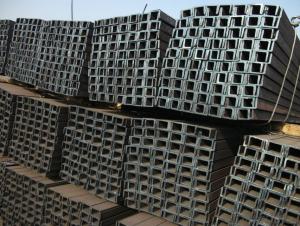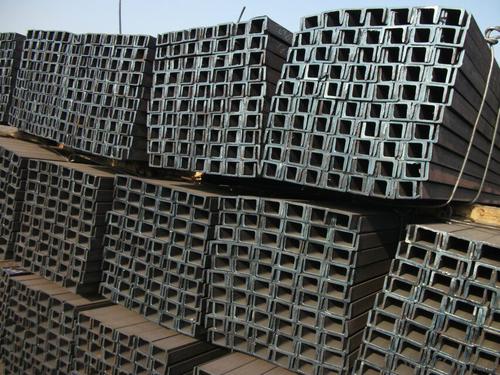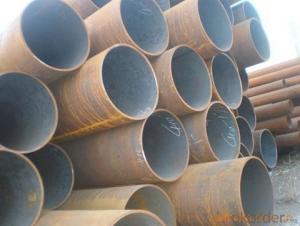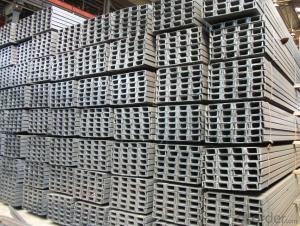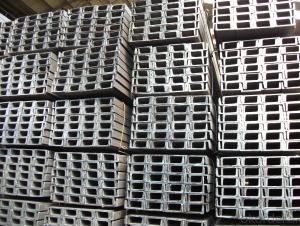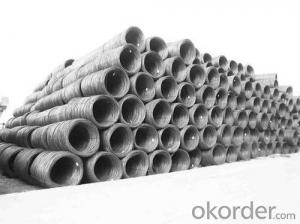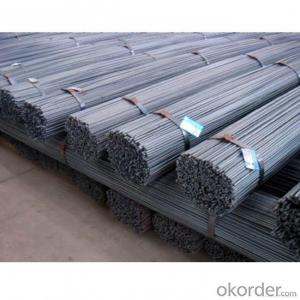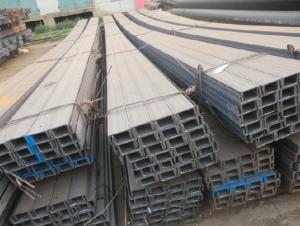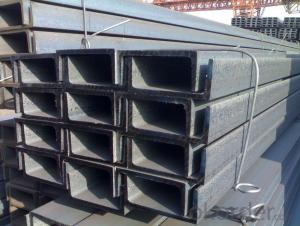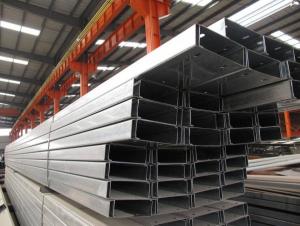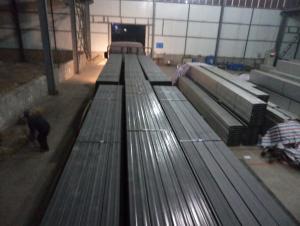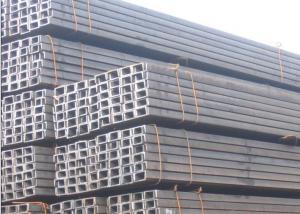Supply JIS Standard U Channel Steel in Sale
- Loading Port:
- Tianjin
- Payment Terms:
- TT OR LC
- Min Order Qty:
- 25 m.t.
- Supply Capability:
- 5000 m.t./month
OKorder Service Pledge
OKorder Financial Service
You Might Also Like
Specification
high quality Hot Rolled Steel U Beam at great prices with worldwide shipping. Our supplier is a world-class manufacturer of steel, with our products utilized the world over. OKorder annually supplies products to European, North American and Asian markets. We provide quotations within 24 hours of receiving an inquiry and guarantee competitive prices.
We supply high quality MS Channel at reasonable price, including Chinese standard, Japanese standard and so on.
Standard | GB/JIS |
Material Grade | Q235,SS400 |
Technique: | Hot Rolled |
Sizes as per chinese standard: | 50*37*4.5mm - 300*89*11.5mm |
Sizes as per japanese standard: | 50*25*3mm – 200*80*7.5mm |
Length: | 6meter, 9meter, 12meter |
Product Applications:
Hot Rolled Steel U-Beams are ideal for structural applications and are widely used in the construction of buildings and bridges, and the manufacturing, petrochemical, and transportation industries.
Product Advantages:
OKorder's Steel U-Beams are durable, strong, and resist corrosion.
Main Product Features:
· Premium quality
· Prompt delivery & seaworthy packing (30 days after receiving deposit)
· Corrosion resistance
· Can be recycled and reused
· Mill test certification
· Professional Service
· Competitive pricing
Product Specifications:
Manufacture: Hot rolled
Grade: Q195 – 235
Certificates: ISO, SGS, BV, CIQ
Length: 6m – 12m, as per customer request
Packaging: Export packing, nude packing, bundled


- Q: What is the lifespan of steel channels?
- The lifespan of steel channels can vary depending on various factors such as the quality of the steel, environmental conditions, and maintenance. However, with proper care and regular maintenance, steel channels can have a lifespan of several decades or even more.
- Q: How much is the channel steel? How much is one and how long is it?. What is the price of different sizes?
- Whether poor channel or national channel, are 6 meters. Channel twelve meters, unless you are specially made to order. With 2, and so on, so long span to do the next floor, GB are not. Unless you are about 3 meters, one support. 12 meters long span do general office loft, have to use i-beam. And more than 16#.
- Q: Can steel channels be used for conveyor supports?
- Yes, steel channels can be used for conveyor supports. Steel channels are commonly used in industrial applications due to their strength and durability. They provide excellent support and stability for conveyors, which carry heavy loads and require a strong support structure. Steel channels can be easily fabricated, allowing for customization to fit specific conveyor requirements. They also offer resistance to corrosion and can withstand harsh operating environments. Overall, steel channels are a popular choice for conveyor supports due to their reliability and robustness.
- Q: Can steel channels be used in load-bearing walls?
- Yes, steel channels can be used in load-bearing walls. Steel channels are commonly used for structural support in construction projects due to their high strength-to-weight ratio. They are often employed in load-bearing walls to provide additional support and stability. Steel channels offer excellent load-bearing capabilities, as they can withstand heavy vertical and horizontal loads. Additionally, they can be easily integrated into the wall structure, making them a practical choice for load-bearing applications. However, it is important to consult with a structural engineer or a construction professional to ensure that the specific steel channels being used meet the required load-bearing capacities and comply with building codes and regulations.
- Q: Are steel channels suitable for use in telecommunications towers?
- Indeed, telecommunications towers can benefit from the utilization of steel channels. Renowned for their robustness and endurance, steel channels are a perfect choice for bearing substantial burdens and enduring harsh weather conditions. Moreover, the simplicity of fabricating and installing steel channels renders them an economical option when constructing telecommunications towers. Furthermore, they offer exceptional structural stability and can be tailored to meet precise height and load prerequisites. Additionally, steel channels boast an extended lifespan and necessitate minimal upkeep, solidifying their reputation as a dependable selection for telecommunications infrastructure.
- Q: What are the advantages of using steel channels over other materials?
- Using steel channels instead of other materials offers several advantages: 1. High strength and durability: Steel channels are renowned for their ability to bear heavy loads and provide structural stability. This makes them suitable for a wide range of construction and engineering applications. 2. Versatility: Steel channels can be easily shaped and manipulated to meet specific requirements. Whether they need to be cut, welded, or bent, they offer flexibility in design and construction projects. 3. Cost-effective: Compared to materials like aluminum or wood, steel channels are a cost-effective choice. They require minimal maintenance, have a longer lifespan, and can be recycled, resulting in reduced overall construction and maintenance costs. 4. Fire-resistant: Steel channels inherently possess fire resistance properties, making them a safer option for building structures. They do not contribute to the spread of fire and allow for more time during emergencies for people to evacuate. 5. Sustainability: Steel is highly sustainable as it can be recycled endlessly without losing its properties. Opting for steel channels promotes environmental conservation and reduces the carbon footprint associated with construction projects. 6. Corrosion resistance: Steel channels can be treated with coatings or galvanized to enhance their resistance to corrosion. This makes them suitable for outdoor applications where they may come into contact with moisture, humidity, or other corrosive elements. 7. Structural integrity: Steel channels provide excellent structural integrity, ensuring that the components they support remain stable and secure. This is especially important in applications where safety and load-bearing capacity are crucial, such as bridges, high-rise buildings, or industrial structures. In conclusion, the use of steel channels offers numerous advantages including strength, durability, versatility, cost-effectiveness, fire resistance, sustainability, resistance to corrosion, and maintenance of structural integrity. These benefits make steel channels the preferred choice for various construction and engineering projects.
- Q: How about the moment of inertia of two back to back channels? There is no formula,,,,.
- 1, all kinds of channel section of the moment of inertia can be found in the materials manual. Usually two values of two axes through a centroid. In the two back to back cross section, the X axis of the cross center (with the upper and lower flange parallel axes) is added as long as the value is added. On the common boundary to convert back to back, not for any centroid axis of inertia moment = the centroid moment of inertia |+ cross-sectional area X centroid to the shaft of the vertical distance square. 2, if you have AutoCAD software, you can directly find any section of the inertial moments of graphics. 3, it is suggested that the textbook of mechanics of materials be turned over again. This is the basic skill.
- Q: Channel 18, number 18. What does it mean?
- Channel 16#a specifications 160x, 63x, 6.5mm, theoretical weight of 17.24 kg per metre, channel 16#b specifications, 160x 65 8.5mm
- Q: What are the typical tolerances for steel channels?
- The typical tolerances for steel channels vary depending on the specific dimension and quality requirements. However, common tolerances for steel channels generally fall within a range of +/- 0.005 to 0.010 inches for dimensions such as width, depth, and thickness.
- Q: What are the common quality control measures for steel channels?
- There are several common quality control measures for steel channels that are implemented to ensure their overall quality and adherence to industry standards. These measures help to identify and address any potential defects or inconsistencies in the production process, ultimately ensuring that the steel channels meet the required specifications. One of the most important quality control measures for steel channels is dimensional inspection. This involves measuring the dimensions of the channels to ensure they match the specified tolerances. This is done using various tools such as calipers, micrometers, and gauges. Any deviations from the specified dimensions are identified and addressed to ensure the channels meet the required standards. Another crucial quality control measure is visual inspection. This involves visually examining the channels for any surface defects, such as scratches, cracks, or dents. Visual inspection ensures that the channels have a smooth and uniform surface, without any imperfections that could affect their structural integrity or appearance. Material testing is also an essential quality control measure. This involves conducting various tests to determine the chemical composition and mechanical properties of the steel used in the channels. These tests may include tensile strength, yield strength, elongation, and hardness tests. Material testing ensures that the steel channels have the desired strength and durability. Welding inspection is another common quality control measure for steel channels. This involves examining the welded joints for any defects, such as incomplete penetration, porosity, or cracks. Welding inspection ensures that the channels have strong and reliable welds, which are critical for their structural stability. Lastly, packaging and labeling inspection is performed to ensure that the steel channels are properly packaged, protected, and labeled. This includes verifying that the channels are appropriately bundled, secured, and protected from damage during transportation. Additionally, the labels on the packaging should accurately indicate the specifications, grade, quantity, and other relevant information. Overall, these quality control measures play a crucial role in ensuring that steel channels meet the required standards and specifications. By implementing these measures, manufacturers can ensure that their products are of high quality, reliable, and suitable for their intended applications.
Send your message to us
Supply JIS Standard U Channel Steel in Sale
- Loading Port:
- Tianjin
- Payment Terms:
- TT OR LC
- Min Order Qty:
- 25 m.t.
- Supply Capability:
- 5000 m.t./month
OKorder Service Pledge
OKorder Financial Service
Similar products
Hot products
Hot Searches
Related keywords
